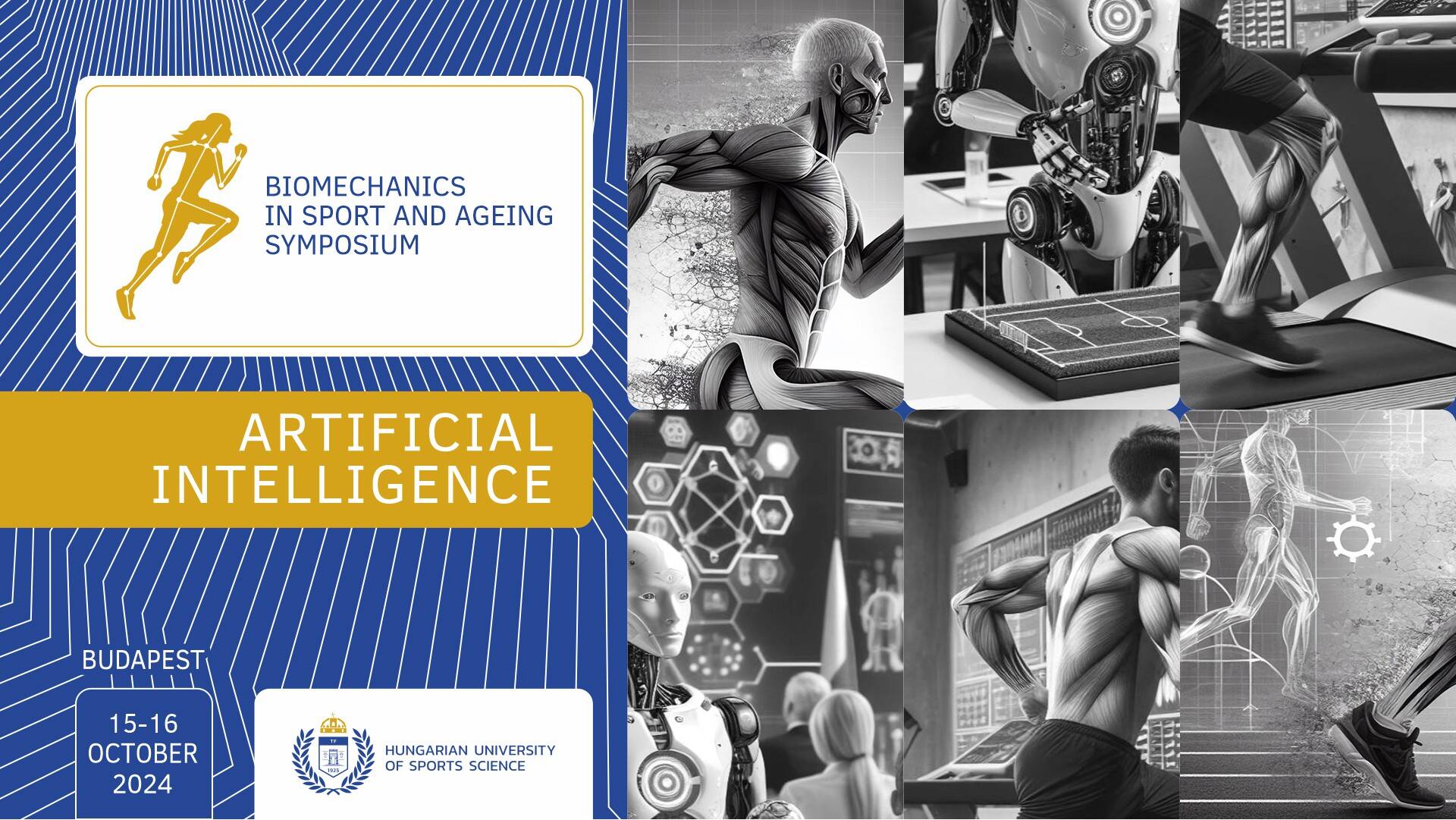tf.hu/bsa |
Welcome to the 2nd Biomechanics in Sport and Ageing Symposium: Artificial Intelligence, organized by the Hungarian University of Sports Science and the Department of Kinesiology, Budapest, Hungary, 15-16 October 2024!
The aim of the symposium is to provide a scientific platform for a state-of-the-art update on the progress of artificial intelligence, AI, in sport biomechanics and ageing. Artificial intelligence relies on computers to execute commands that historically required human intelligence. Now, we have apps that offer talking digital assistant services, respond to voice and text requests, it can answer questions, write poetry, generate images, draft emails, analyze personal photos, set a timer or place a phone call. Indeed, as we can surmise it from Turing’s seminal paper, AI builds computational units that mimic human intelligence and abilities: language, communication, comprehension of concepts, automated thinking, (machine) learning, computer vision, and movements via robotics (1). Supervised or unsupervised machine learning, i.e., the science of coding computers to learn and behave as humans do, as a subset of AI, allows us to discern patterns and structure in data. Deep learning optimizes supervised learning and trains models to learn how to map an input to an expected output (2). All this occurring at a neck breaking pace so that “global governance is needed, otherwise the risk is social collapse” opines Paolo Benanti, a Vatican and Italian government advisor on AI ethics.
The tools of AI are also becoming ubiquitous in sport biomechanics and ageing research. Sport and ageing might appear unrelated. Yet we consider sport and ageing as complementary: assessment and training methods developed in sport science are transformed into diagnosis and treatment of ageing-related impairments. Along the spectrum from low and to high levels of physical and cognitive function, the current symposium highlights how AI is leveraged to assess and increase top performance, predict motor and cognitive function, and ultimately deliver improved care for all individuals across the lifespan, including athletes and seniors (3).
Accordingly, the lead keynote will introduce AI and the following two keynotes will provide a state-of-the-art overview of AI in sport and ageing. From 6 countries, 12 invited area-expert speakers will give (big) data-based examples for how AI is used in sport and ageing with respect to: Body structure and exercise prescription; Motor-cognitive function; Injury and disease, and Performance assessment and prediction in a workshop format.
Welcome to Budapest! Network, learn, and enjoy the symposium!
Sincerely yours,
Prof. dr. Tamás Sterbenz, PhD, Rector and Patron of the symposium
Prof. dr. h. c. Tibor Hortobágyi, PhD, chair of the scientific committee
Mr. Dániel Mezei and Ms. Eszter Kerekes, chairs of the organizing committee
References:
- Turing AM. On computable numbers, with an application to the Entscheidungsproblem. Proc London Math Soc 58: 230–65, 1936.
- LeCun et al Deep learning. Nature 521: 436–44, 2015.
- Zhang et al Leveraging physiology and artificial intelligence to deliver advancements in health care. Physiol Rev 103: 2423–50, 2023.




